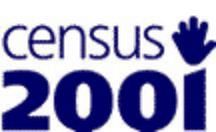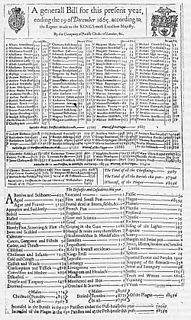The Office for National Statistics (ONS) is the executive office of the UK Statistics Authority, a non-ministerial department which reports directly to the UK Parliament.

The Registration of Political Parties Act 1998, is an Act of the Parliament of the United Kingdom which made legal provision to set up a register of political parties in the United Kingdom. Previously there had been no such register, and political parties were not specially recognised. There were 468 political parties registered in the UK on 8 October 2016.

A nationwide census, known as Census 2001, was conducted in the United Kingdom on Sunday, 29 April 2001. This was the 20th UK census and recorded a resident population of 58,789,194.
The General Register Office for England and Wales (GRO) is the section of the United Kingdom HM Passport Office responsible for the civil registration of births, adoptions, marriages, civil partnerships and deaths in England and Wales and for those same events outside the UK if they involve a UK citizen and qualify to be registered in various miscellaneous registers. With a small number of historic exceptions involving military personnel, it does not deal with records of such events occurring within the land or territorial waters of Scotland, Northern Ireland or the Republic of Ireland; those entities' registration systems have always been separate from England and Wales.

The General Register Office for Scotland (GROS) was a non-ministerial directorate of the Scottish Government that administered the registration of births, deaths, marriages, divorces and adoptions in Scotland. It was also responsible for the statutes relating to the formalities of marriage and conduct of civil marriage in Scotland. It administered the census of Scotland's population every ten years. It also kept the Scottish National Health Service Central Register. On 1 April 2011 it was merged with the National Archives of Scotland to form National Records of Scotland. All the former department's functions continue as part of the new body.

Her Majesty's Land Registry is a non-ministerial department of the Government of the United Kingdom, created in 1862 to register the ownership of land and property in England and Wales. It reports to the Department for Business, Energy and Industrial Strategy

General Register Office (GRO) is the name given to the civil registry in England and Wales, Scotland, many other Commonwealth nations and Ireland. As such, the GRO is the government agency responsible for the recording of vital records such as births, deaths, and marriages. The director of a General Register Office is titled Registrar General.
Land registration generally describes systems by which matters concerning ownership, possession or other rights in land can be recorded to provide evidence of title, facilitate transactions and to prevent unlawful disposal. The information recorded and the protection provided will vary by jurisdiction.
The Census Act 1800 also known as the Population Act 1800 was an Act of the Parliament of Great Britain which enabled the first Census of England, Scotland and Wales to be undertaken. The census was carried out in 1801 and every ten years thereafter. The 1801 census estimated the population of England and Wales to be 8.9 million, and that of Scotland was 1.6 million. Ireland was not included in the census until 1821.
The United Kingdom Census of 1851 recorded the people residing in every household on the night of Sunday 30 March 1851, and was the second of the UK censuses to include details of household members. However, this census added considerably to the fields recorded in the earlier 1841 UK Census, providing additional details of ages, relationships and origins, making the 1851 census a rich source of information for both demographers and genealogists.
A national census in Canada is conducted every five years by Statistics Canada. The census provides demographic and statistical data that is used to plan public services including health care, education, and transportation, determine federal transfer payments, and determine the number of Members of Parliament for each province and territory. At a sub-national level, two provinces and two territories have legislation that allows local governments to conduct their own municipal censuses.

Bills of mortality were the weekly mortality statistics in London, designed to monitor burials from 1592 to 1595 and then continuously from 1603. The responsibility to produce the statistics was chartered in 1611 to the Worshipful Company of Parish Clerks. The bills covered an area that started to expand as London grew from the City of London, before reaching its maximum extent in 1636. New parishes were then only added where ancient parishes within the area were divided. Factors such as the use of suburban cemeteries outside the area, the exemption of extra-parochial places within the area, the wider growth of the metropolis, and that they recorded burials rather than deaths, rendered their data incomplete. Production of the bills went into decline from 1819 as parishes ceased to provide returns, with the last surviving weekly bill dating from 1858. They were superseded by the weekly returns of the Registrar General from 1840, taking in further parishes until 1847. This area became the district of the Metropolitan Board of Works in 1855, the County of London in 1889 and Inner London in 1965.

The Census Act 1920 is an Act of the Parliament of the United Kingdom. Providing for a census for Great Britain, on a date to be fixed by Order in Council, it remains the primary legislation for the provision of the UK census in England, Scotland, and Wales. A minimum of five years is required between censuses.

A nationwide census, commonly known as Census 1991, was conducted in the United Kingdom on Sunday 21 April 1991. This was the 19th UK census.

The National Registration Act 1939 was an Act of Parliament in the United Kingdom. The initial National Registration Bill was introduced to Parliament as an emergency measure at the start of World War II. Royal assent given on 5 September 1939.

A census of the population of the United Kingdom is taken every ten years. The 2011 census was held in all countries of the UK on 27 March 2011. It was the first UK census which could be completed online via the Internet. The Office for National Statistics (ONS) is responsible for the census in England and Wales, the General Register Office for Scotland (GROS) is responsible for the census in Scotland, and the Northern Ireland Statistics and Research Agency (NISRA) is responsible for the census in Northern Ireland.

The Electoral Registration and Administration Act 2013 is an Act of the Parliament of the United Kingdom which amended electoral law in the United Kingdom. It introduced Individual Electoral Registration (IER).
Beyond 2011 also known as The Beyond 2011 Programme is a project initiated by the UK Statistics Authority to look at the alternatives to running a Census in 2021. In 2008 UK Government Treasury Select Committee had expressed concerns about the increasing cost of running the census and inaccuracies in data gathered only every ten years. In 2010 the newly elected coalition government reiterated such concerns responding to a report by the UK Statistics Authority.

The European Union (Withdrawal) Act 2018 is an Act of the Parliament of the United Kingdom that provides for repealing the European Communities Act 1972, and for Parliamentary approval of the withdrawal agreement being negotiated between HM Government and the European Union.












